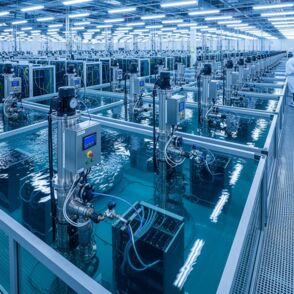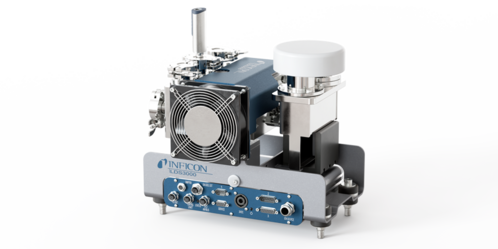Combating Fluid Loss and Thermal Events in Data Centers
Starting at the Source

Modern data centers rely on complex cooling systems designed for maximum efficiency and reliability. With the rapid growth of AI workloads, rising GPU counts, and ever-denser power architectures, the requirements on these cooling systems have reached new extremes. Even a minor fluid leak can disrupt thermal balance, compromise uptime, and put expensive hardware at risk.
The most effective protection against such failures starts far earlier than installation—it begins during the manufacture and testing of the cooling components themselves.
The Growing Challenge of Cooling at Scale
The shift from air-cooled to liquid-cooled architectures is accelerating across the AI, cloud, and high-performance computing markets. According to IDC, roughly 22 % of all data centers already employ liquid cooling—either direct-to-chip or immersion-based—and that number continues to rise as energy efficiency and processing density become key differentiators.
This evolution also introduces new challenges. Higher heat fluxes and compact packaging increase the risk of fluid loss, while lithium-ion batteries in uninterruptible power supplies (UPS) add potential safety risks. A single leak or thermal incident in a high-density rack can damage equipment valued at millions, cause significant downtime, and threaten service-level agreements.
Fluid Loss: A Hidden but Critical Risk
Regardless of whether systems use conductive water-glycol mixtures or dielectric immersion fluids, leaks pose serious performance and safety risks.
- In direct-to-chip cooling, leaks in cold plates, fittings, or seals can cause short circuits.
- In immersion cooling, insufficient sealing can result in cross-contamination or fluid degradation.
- In two-phase immersion systems, even vapor leaks can upset pressure balance, reduce condensation efficiency, and lead to temperature instability.


Microleaks that go undetected during component manufacturing can later manifest as thermal inefficiencies or failures once the cooling system is deployed. Over time, thermal cycling, vibration, or pressure fluctuations can widen small defects into major points of failure—highlighting the importance of early leak detection.
Detecting the Smallest Leaks—Why Industrial Testing Matters
While many suppliers of cooling components rely on pressure-decay or bubble tests, these methods are often inadequate for modern applications. Only tracer-gas testing—using vacuum chambers or highly sensitive sniffer leak detectors—can detect minor leaks that are necessary for true fluid and gas tightness.
In vacuum testing, components are enclosed and assessed for tracer gas escape at extremely low concentrations. For end-of-line quality control, advanced sniffer leak detectors provide fast throughput, linear response, and quantitative verification. Unlike traditional methods that simply confirm “pass or fail,” tracer gas testing delivers measurable data that can be tracked, analyzed, and optimized over time.
From Specification to Reality
True reliability is achieved when leak testing becomes part of a manufacturer’s overall quality strategy. A comprehensive approach typically includes:
- Design validation under realistic temperature and pressure conditions
- In-process leak testing of subassemblies such as cold plates, valves, and seals
- End-of-line tracer gas testing of complete components or cooling circuits
- Statistical monitoring to identify deviations and prevent process drift
Reliable cooling performance begins on the production line. Manufacturers should integrate leak testing throughout their process:
- Design validation under realistic operating pressure and temperature
- In-process testing for subassemblies such as cold plates and seals
- End-of-line tracer gas leak testing for assembled components
- Continuous quality monitoring through statistical trend analysis
Leak detection isn’t a last-minute test — it’s part of process control,” explains Loughran. “Each stage adds confidence that the final product will perform safely for years.”
Ultimately, cooling reliability starts long before the data center goes live. It starts at the factory—with manufacturers who take leak testing seriously. That’s where INFICON helps ensure data centers stay cool, efficient, and safe.
As AI continues to transform the digital landscape, leak-tight manufacturing is emerging as a critical enabler of reliability. Preventing fluid loss isn't just about avoiding downtime—it’s about safeguarding the performance, energy efficiency, and longevity of the entire data-center ecosystem.
Want to Learn More?
For more information on leak detection in data centers, simply contact us!
Connect with Us at Global HVAC-R Events!
We frequently attend major HVAC-R exhibitions worldwide. Meet our experts, explore our latest innovations, and discuss your production challenges.

